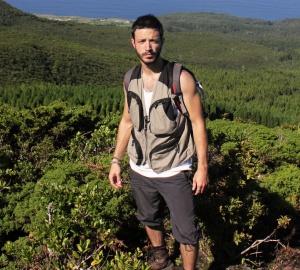Lamelas López, L., Fontaine, R., Borges, P.A.V. & Gonçalves, D. (2020) Impact of introduced nest predators on insular endemic birds: the case of the Azores Woodpigeon (Columba palumbus azorica).
Biological Invasions,
22, 3593-3608. DOI:10.1007/s10530-020-02343-0 (IF2020 3,133; Q1 Biodiversity Conservation)
Nest predation is the main cause of reproductive failure in many bird species. Identification of predators is crucial to understand and interpret the factors that affect nest predation. Although nest predation is a natural top-down regulator of bird populations, its effect is usually more dramatic when introduced predators are involved, particularly in oceanic islands. In the Azores archipelago, the endemic Azores Woodpigeon (Columba palumbus azorica) is believed to be under high predation pressure. We used motion-triggered cameras to monitor nests of the Azores Woodpigeon on two islands of the archipelago (Pico and Terceira) in order to identify nest predators, quantify their impact on this bird and better understand the determinants of predation rates. We sampled 56 nests, during 569 camera trap days, obtaining around 125,000 photographic records. Two introduced predators were identified, black rat (on both islands) and feral cat (only on Terceira), both depredating eggs and chicks. Breeding success, calculated using the Mayfield method, was estimated at 19% on Pico and only 9% on Terceira. Overall, predation was the main cause of breeding failure. General linear models showed that predation rates are positively correlated to fruit availability and negatively correlated to elevation, human population density and adult Woodpigeon attendance at the nest. Edge distance, nest height or cover of trees did not affect predation. Camera traps also provided additional and useful information on predator behaviour when approaching a nest and on daily activity patterns of both adult Woodpigeon and nest predators.


